The Transport+ is one of the first electric bikes introduced by Trek in 2011. While it’s no longer being produced, this was an advanced ebike at the time with drive systems from BionX which included regenerative braking. The Transport+ came stock with lights, a front fender, folding running boards and an extra-large Bontrager cargo bag. It offered great value in my opinion but never quite caught on. The two big drawbacks I noticed when testing this bike were the loud rattly frame that also flexes under the weight of the motor and battery at the rear as well as the lack of a throttle mode which could really be useful when starting a heavy bike like this from rest.
The motor driving this bike offers a solid 350 watts of power and is a gearless, direct drive configuration built into a hub at the rear. It’s super quiet and delivers regeneration functionality that can only be activated as regenerative braking here. The motor is made by BionX and offers four levels of regen which can be useful for extending range (in the lower modes) or really helping you out with hills, wind and a heavy load. Trek rebranded the drive system here as Electric Propulsion Systems (EPS) and made the display panel simpler. All in all, the motor is sturdy and reliable but suffers from being heavier than a geared configuration and also experiences light cogging while coasting (drag from the magnets repelling inside).
The battery pack on the Transport Plus offers 37 volts of power with 9.6 amp hours of capacity. That’s pretty good for the 2011 time period and would be considered average in late 2014 (when this review was published). The cells contain a Lithium-ion chemistry that’s light weight, durable and long lasting. Unfortunately, these cells still wear out over time and I don’t think Trek offers replacement packs anymore. If this ebike has been sitting in someone’s garage or was unused at a shop for 3+ years without being charged every few months the battery may become permanently damaged and no longer hold a charge. Be sure to test this if you’re considering purchasing the bike used. If the battery is dead, you could remove the pack and replace the rear wheel, which contains the hub motor, to convert this into a regular pedal-power bicycle. That’s actually one of the best features of the battery (besides the built-in light), it’s removable for convenient charging.
Operating this bike very easy. There are standard brake levers and two sets of trigger shifters (one on each bar) to operate the 18 gear speeds. When you’re ready for assist, just turn on the display and arrow up through four levels of power that deliver from 25% to 200% boost. While the display is not removable, it stays mostly out of the way and uses an easy to read monochrome LCD which also shows your speed, battery capacity and lights status. I personally would have preferred the standard BionX display vs. a dumbed down version that strips regen and throttle mode. Still, for the time period this was being sold it was definitely a higher-end setup and works well enough.
In my opinion, the Trek Transport+ came out ahead of its time because these days Yuba and Xtracycle seem to be doing very well with similar cargo-style designs. These newer ebikes aren’t as rattly, tend to have better kickstands and rack designs and offer more power but otherwise… they’re very similar. If you’re considering an older Trek Ride+ model including the Transport+ electric bike just make sure the battery can hold a charge and keep your expectations low for how long the battery will last. Trek offered a two year battery warranty or 600 charge cycle guarantee (whichever came first). Some engineer hobbyist types may be able to rebuild the battery from one of these ebikes but this can be hazardous so approach with care.
Pros:
- Rear running boards fold up to stay out of the way and include a simple locking pin, these platforms support side bags (such as the included Bontrager cargo bag) or could be used as foot rests if carrying a passenger
- Extra tubing added to sides of rear carry rack that uses standard size tube diameter for use with most clip on panniers and bags, also have multiple pannier blocking tubes and bungee points
- Regenerative braking helps to transform the added weight of the frame and cargo into electricity to extend ride while saving your brake pads, only the right lever activates regen
- Removable battery pack is easier to charge off of the frame due to the overall size and length of the bike
- Front and rear lights, front fender, ergonomic grip and swept back handlebars add utility and comfort for commuting
- One of the only electric cargo bikes widely available in the US in the ~2011 time period, relatively affordable for that time
Cons:
- Front carry rack is connected to the fork and turns as you steer the bike which could become unstable, ideally the rack would attach to the head tube for strength and stability
- No throttle mode, just pedal assist which is surprising given the BionX system is capable of using a throttle and this could be useful to start the bike from rest when loaded with supplies
- Very rear-heavy with the extended rack, reinforced tubing, motor and battery which makes the bike harder to move and causes some torsional flex in the frame
Resources:
- Official Site: http://www.trekbikes.com/
- More Pictures: https://goo.gl/photos/QTwyaGNq2JJxEWeL9

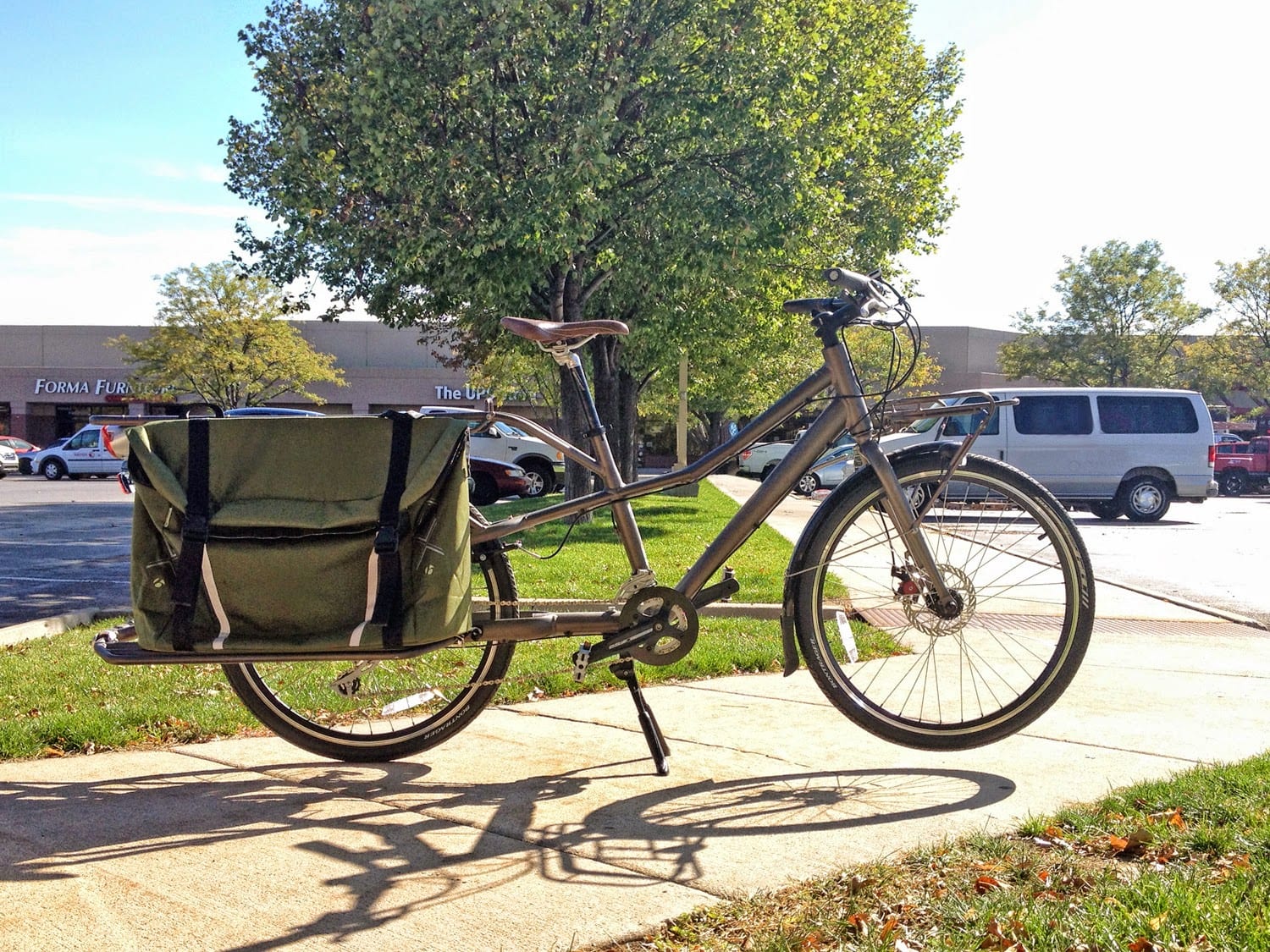
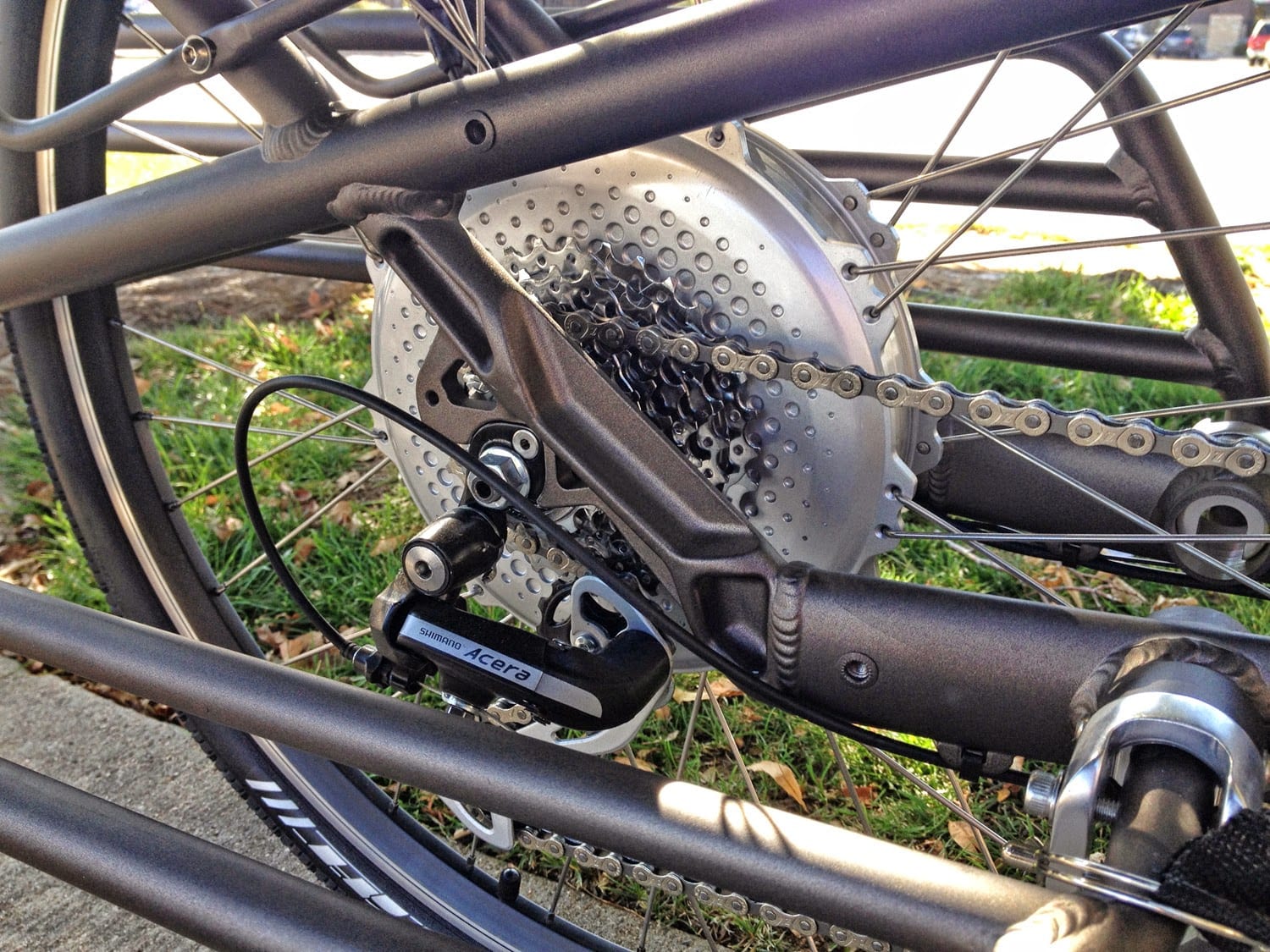
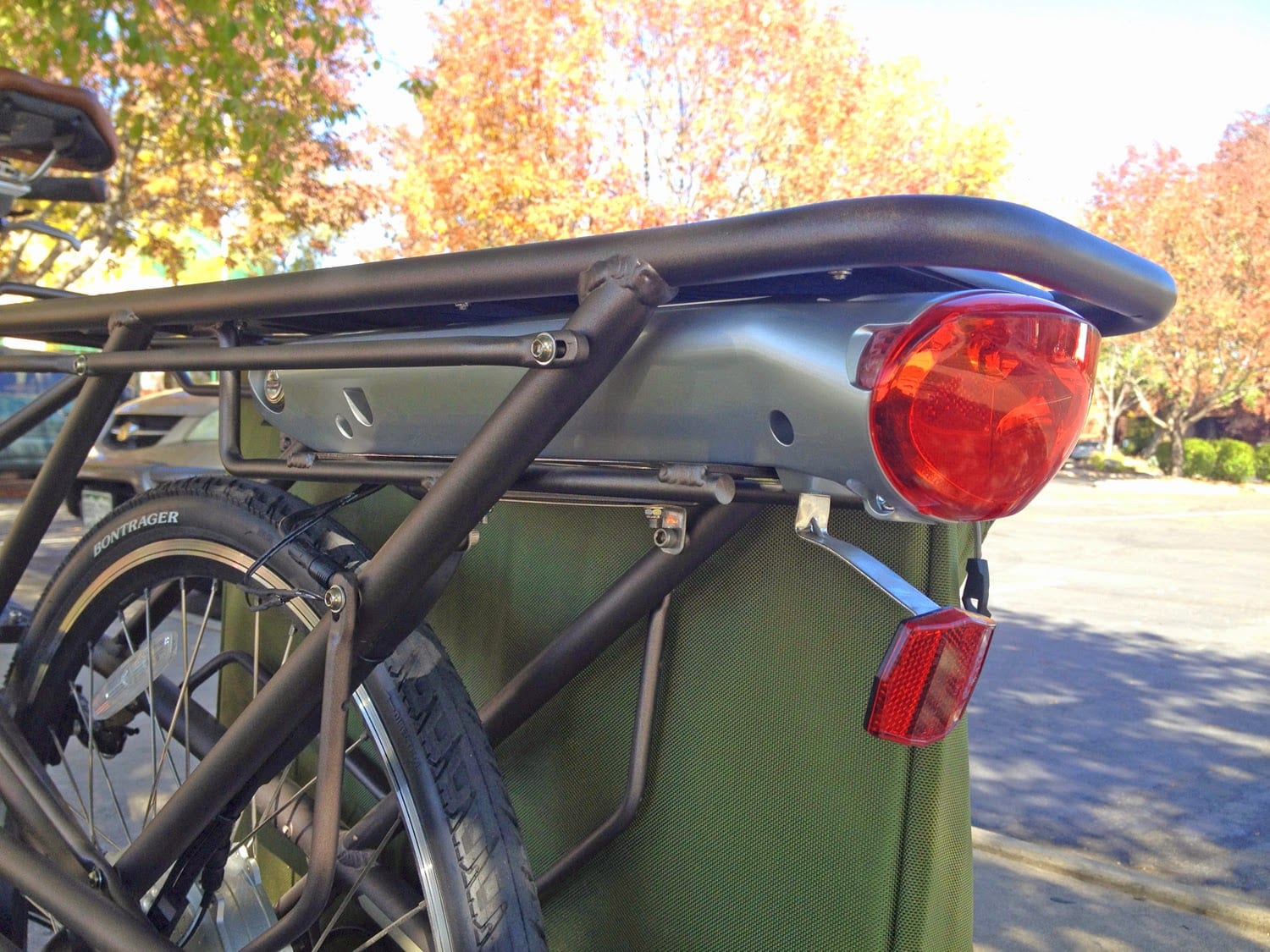
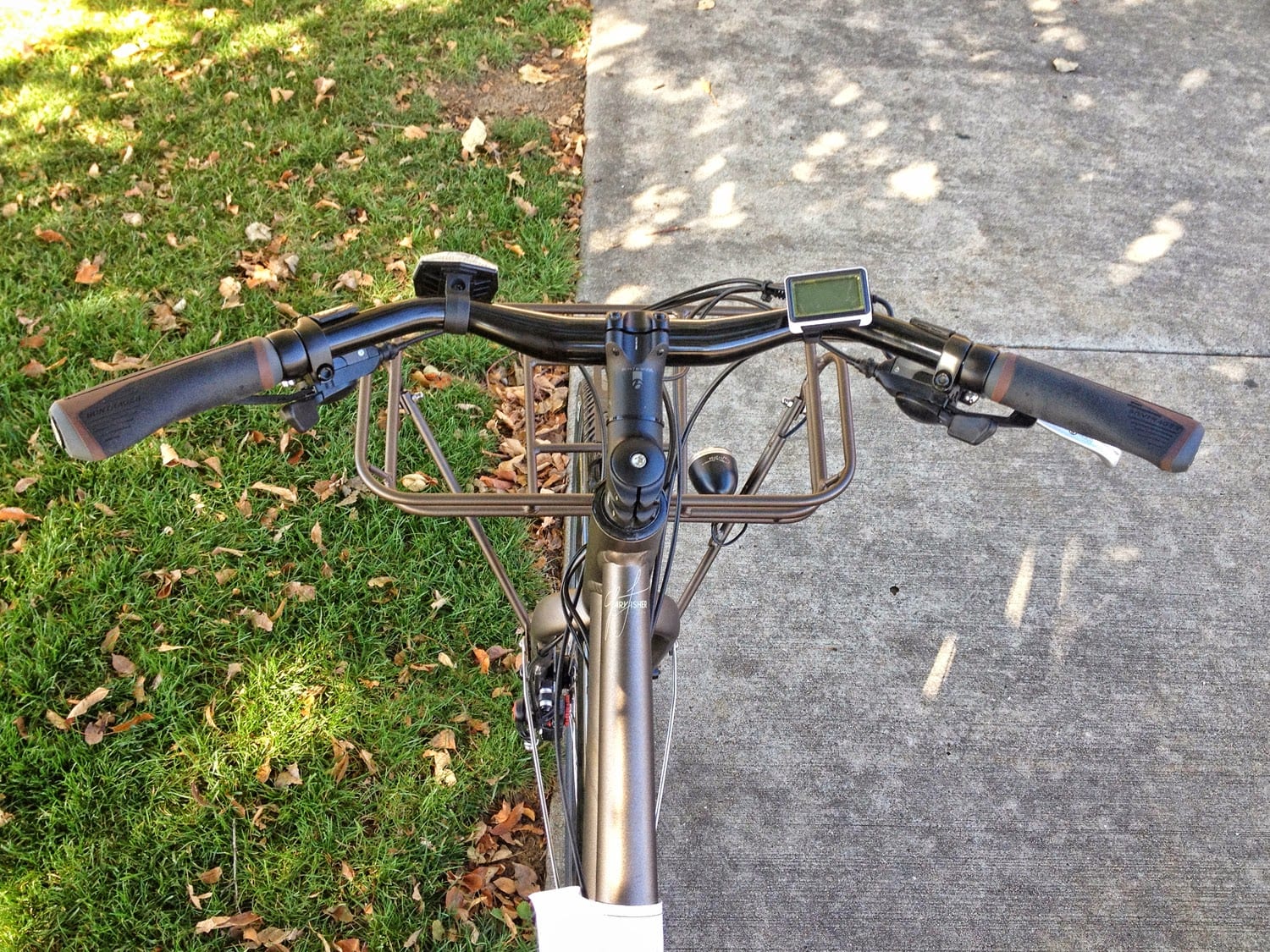
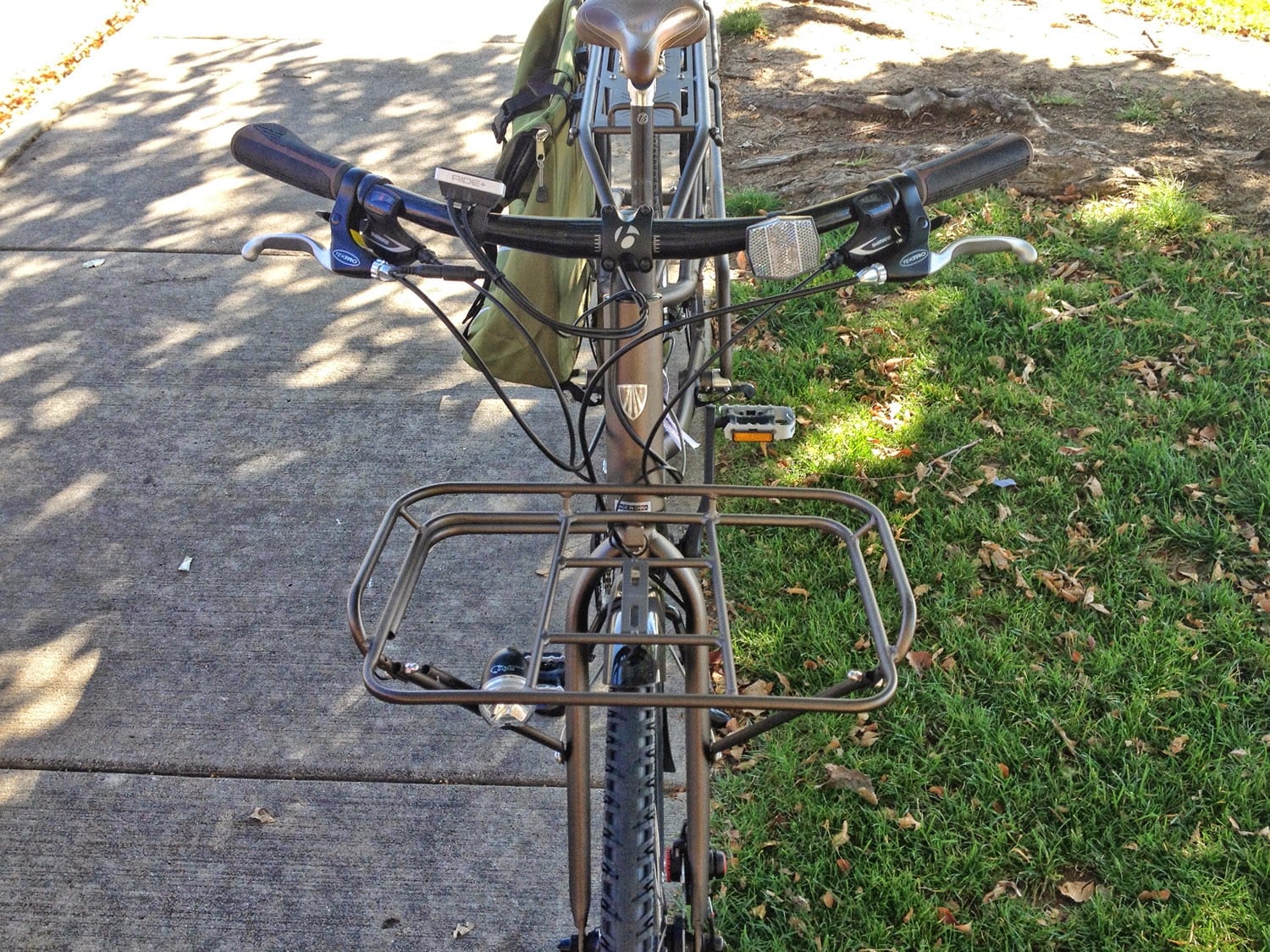

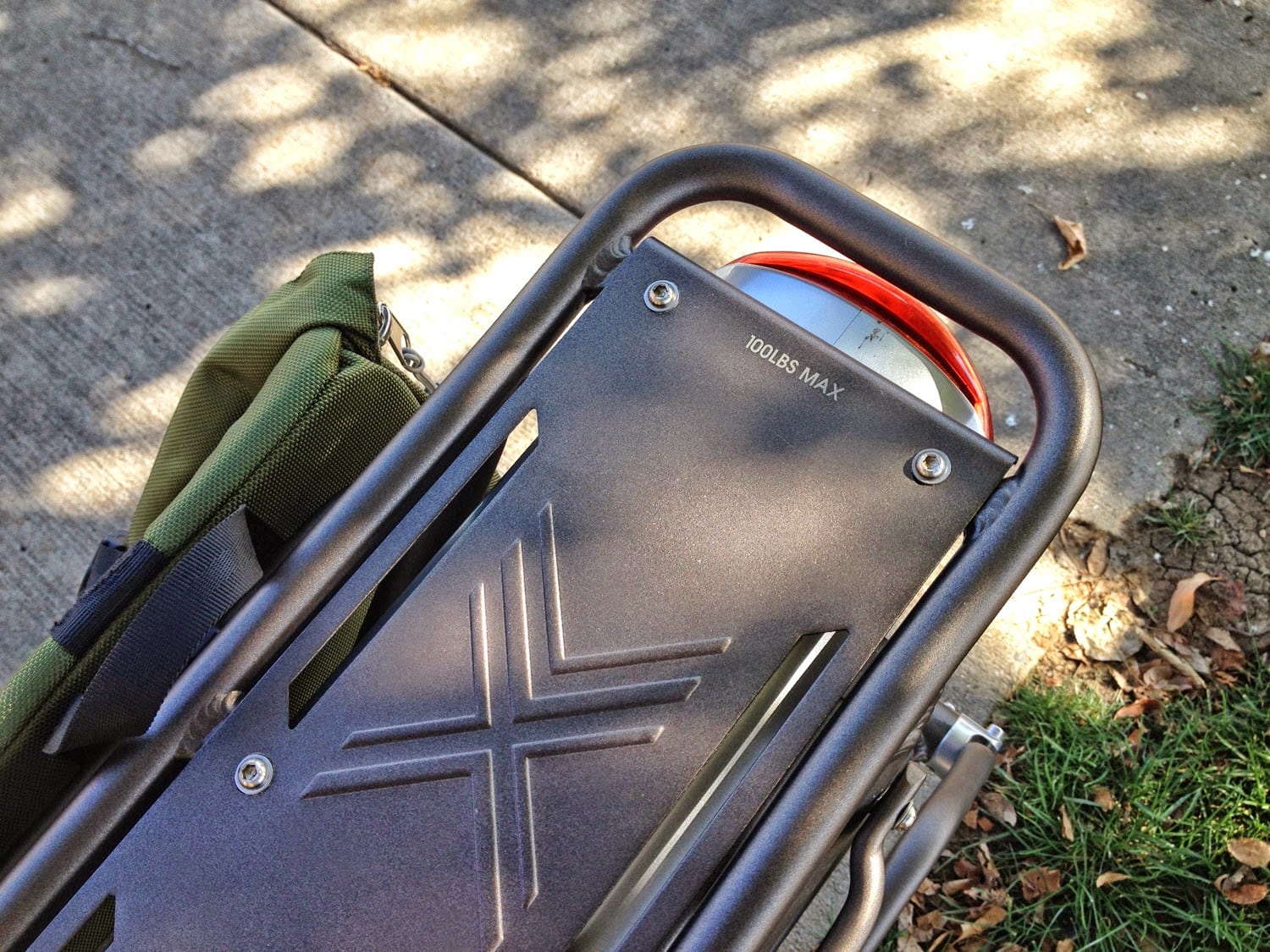
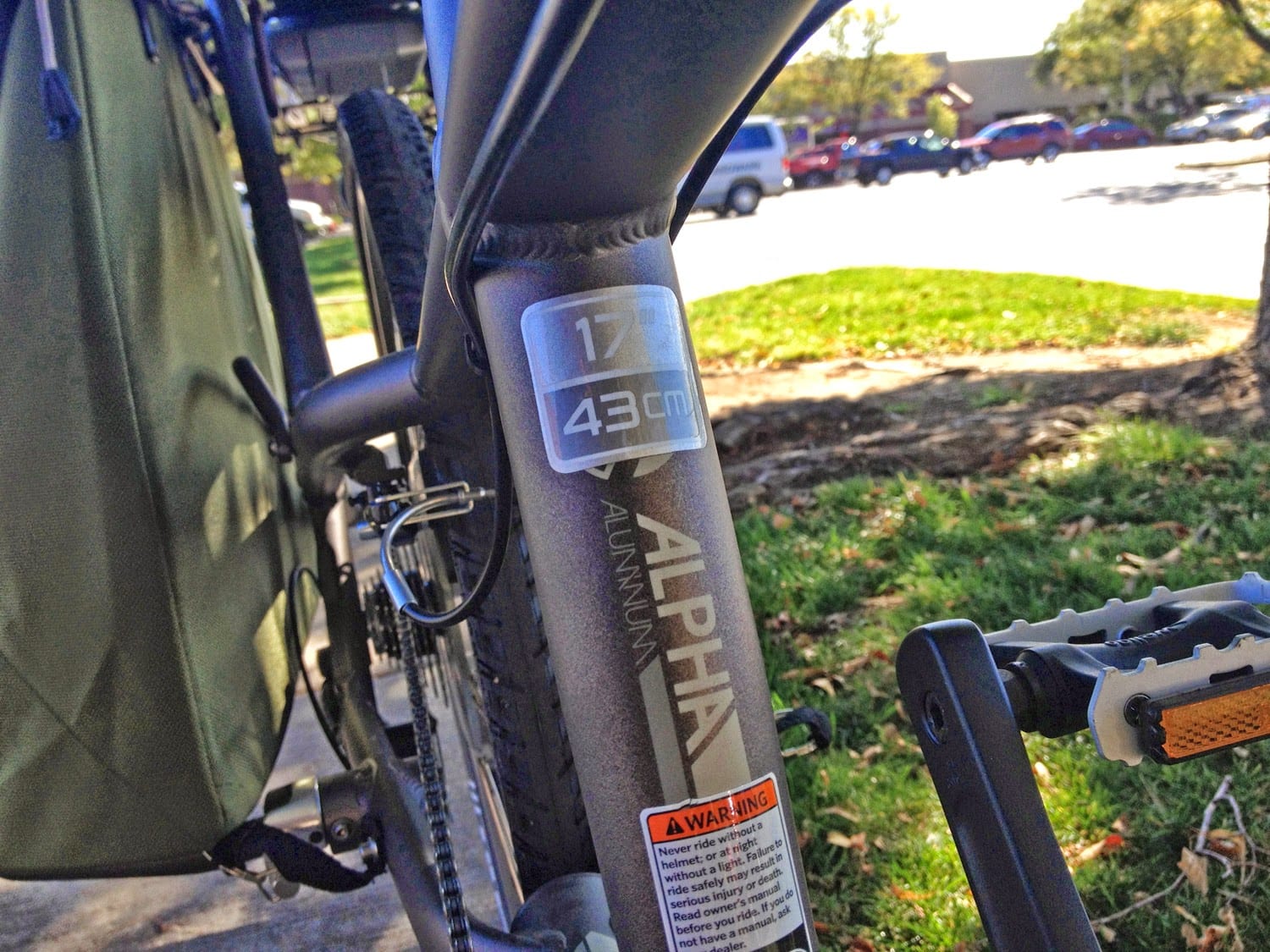
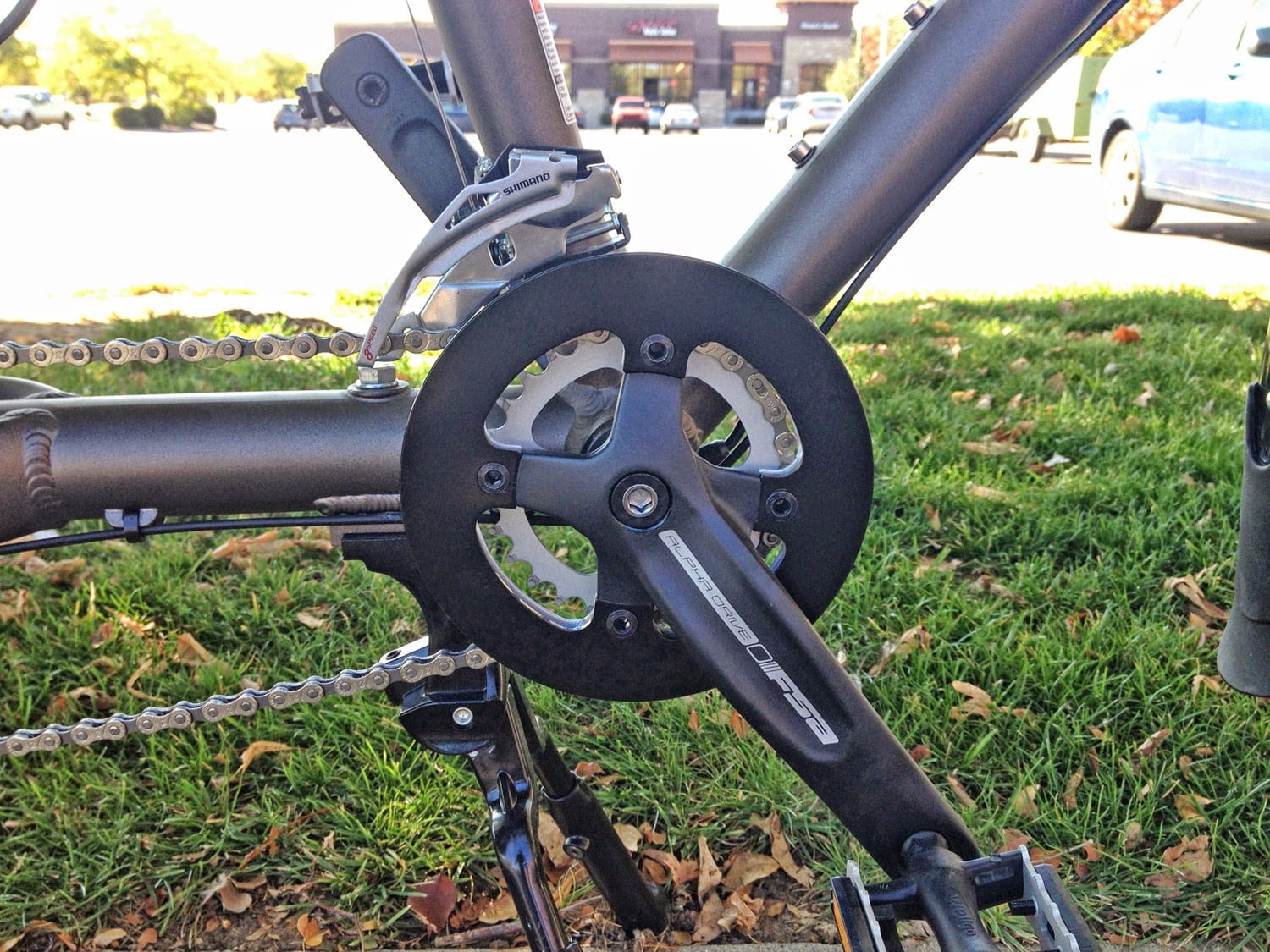

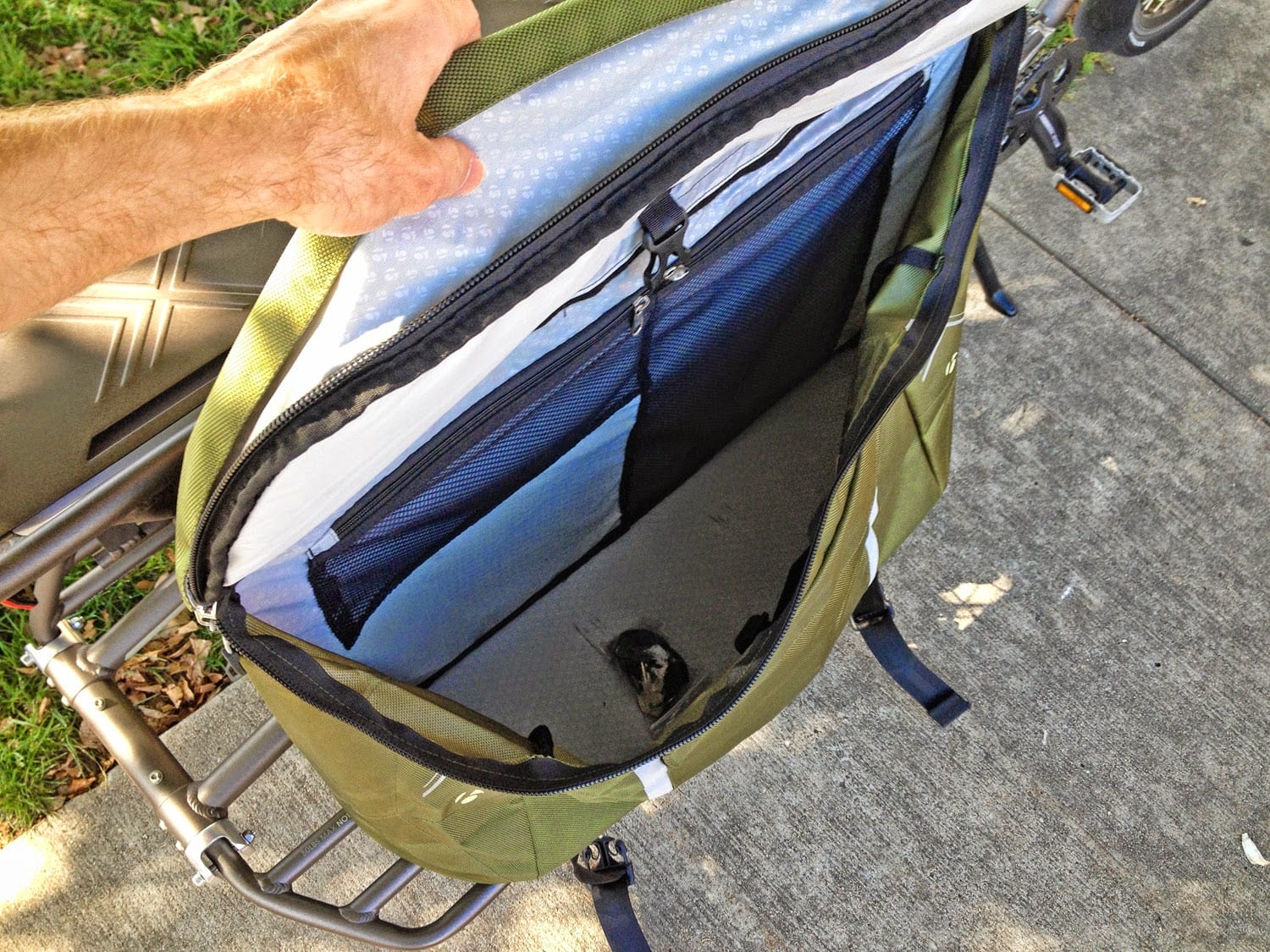
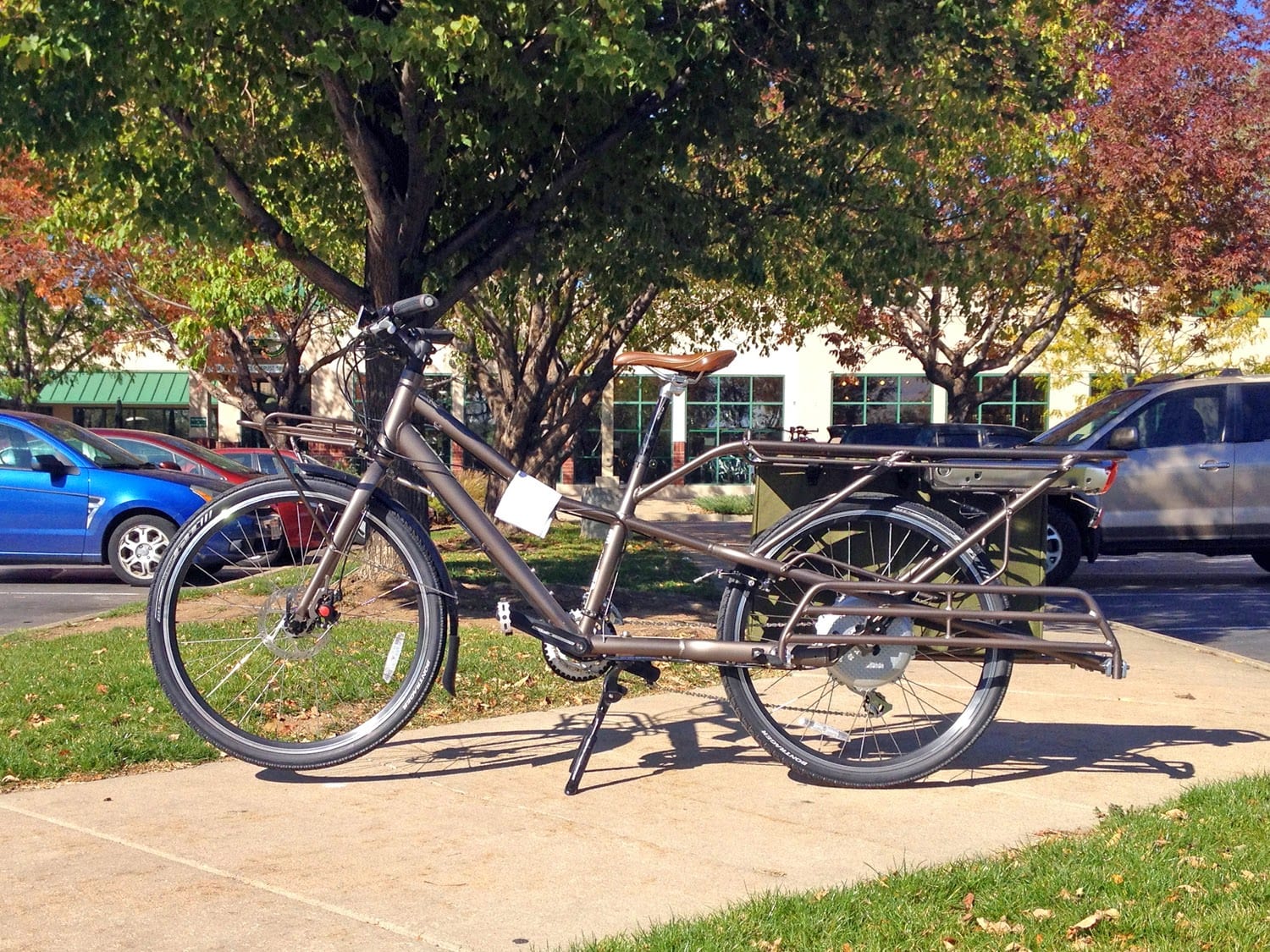
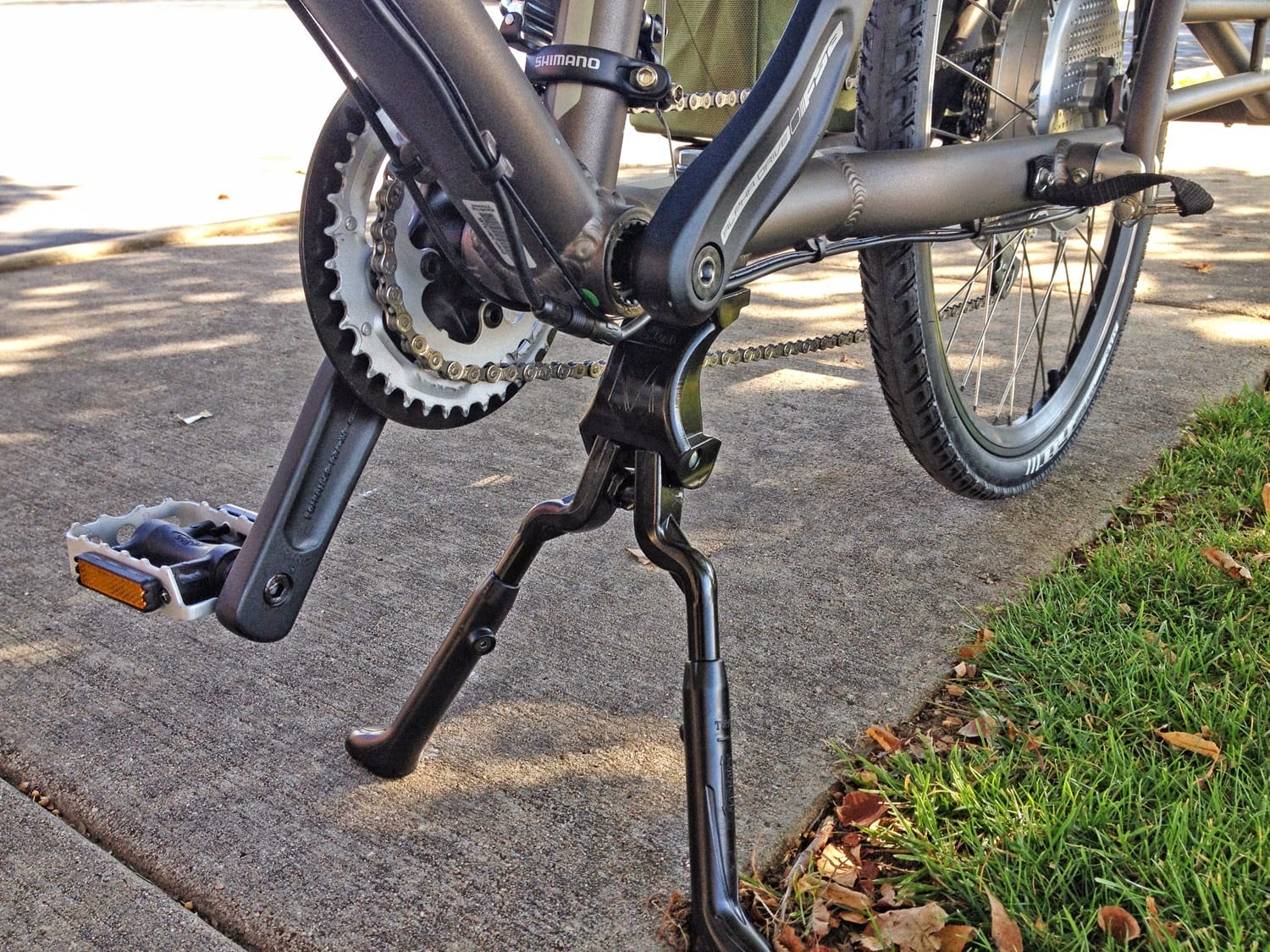
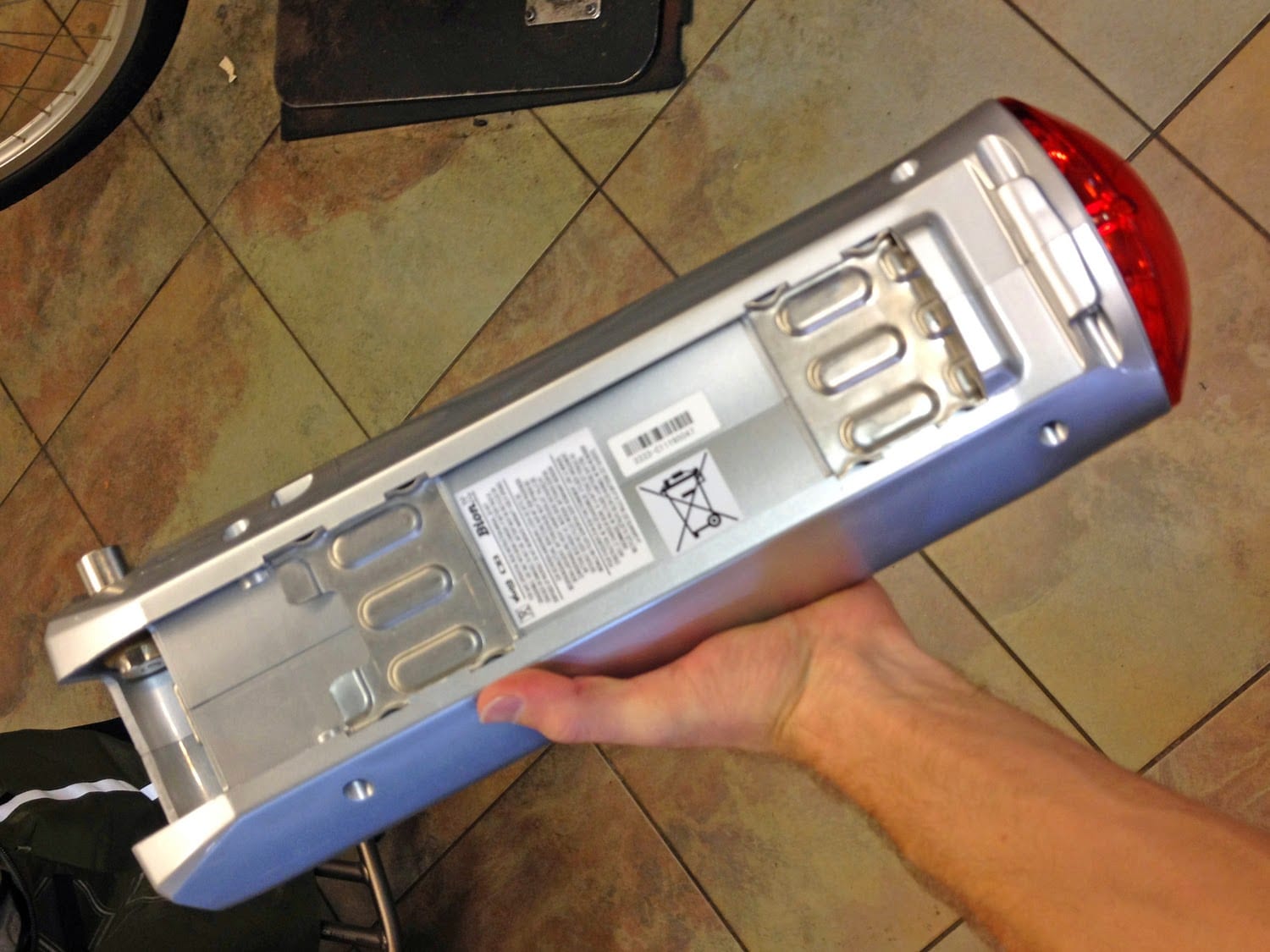
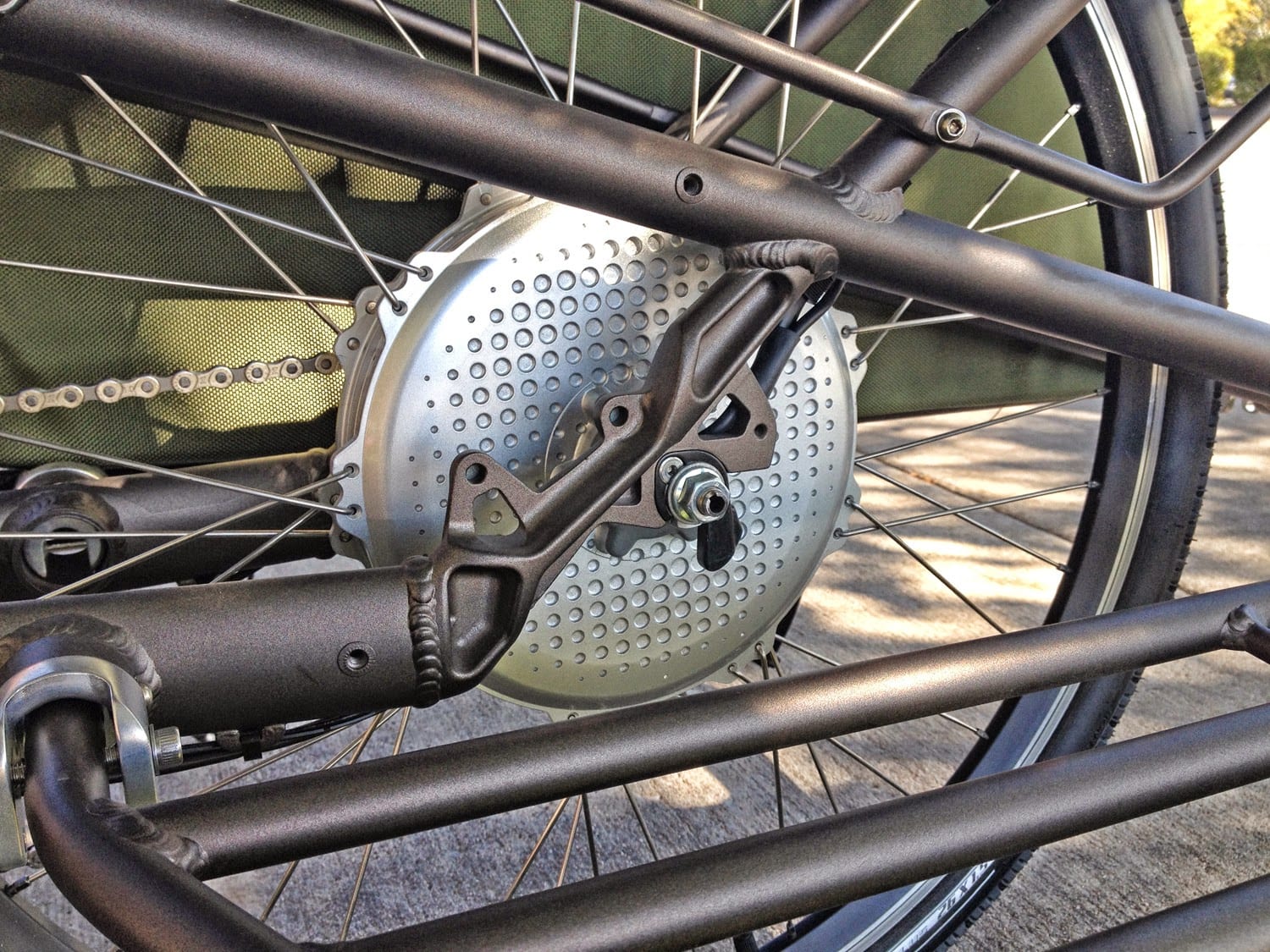
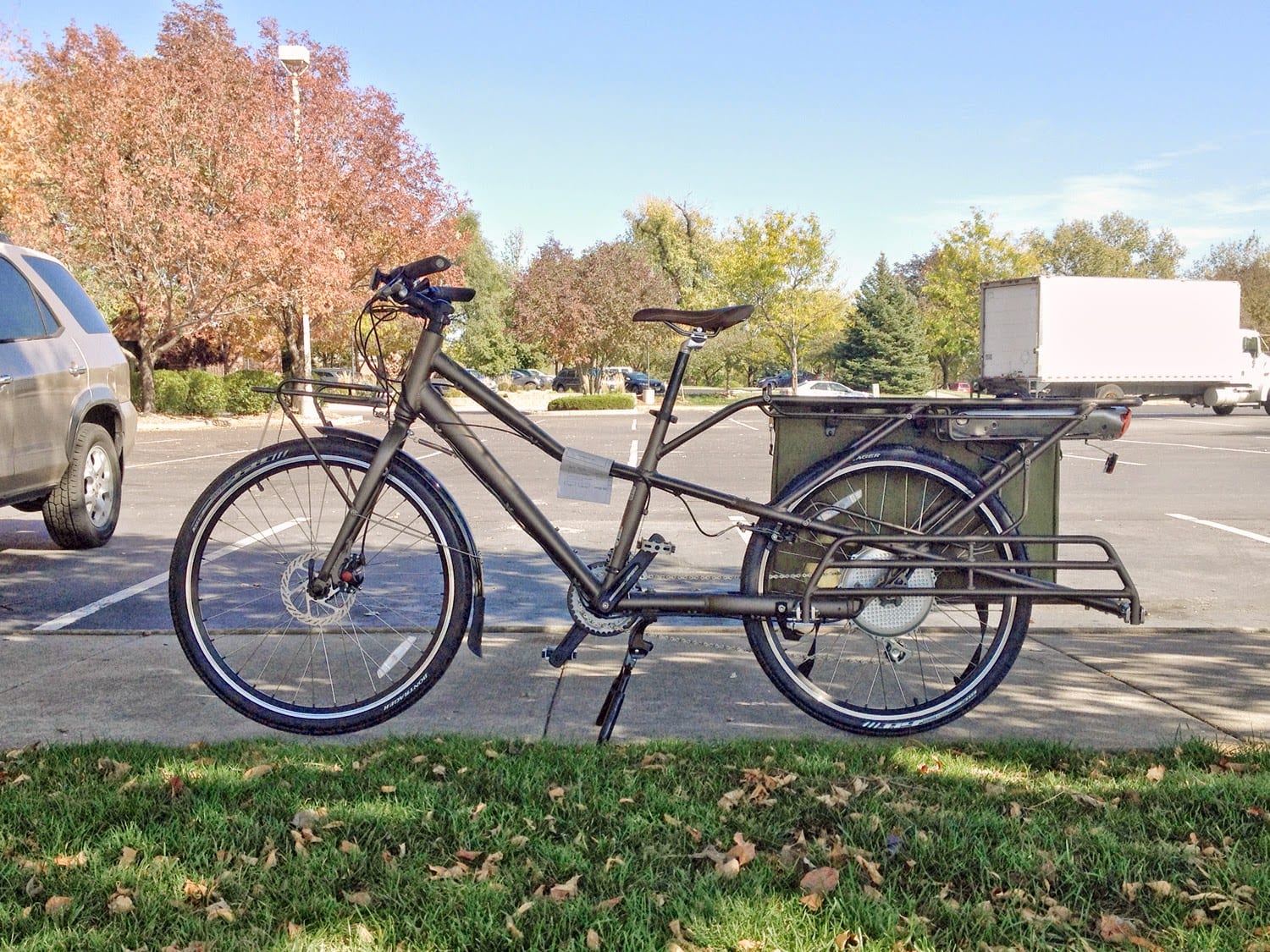

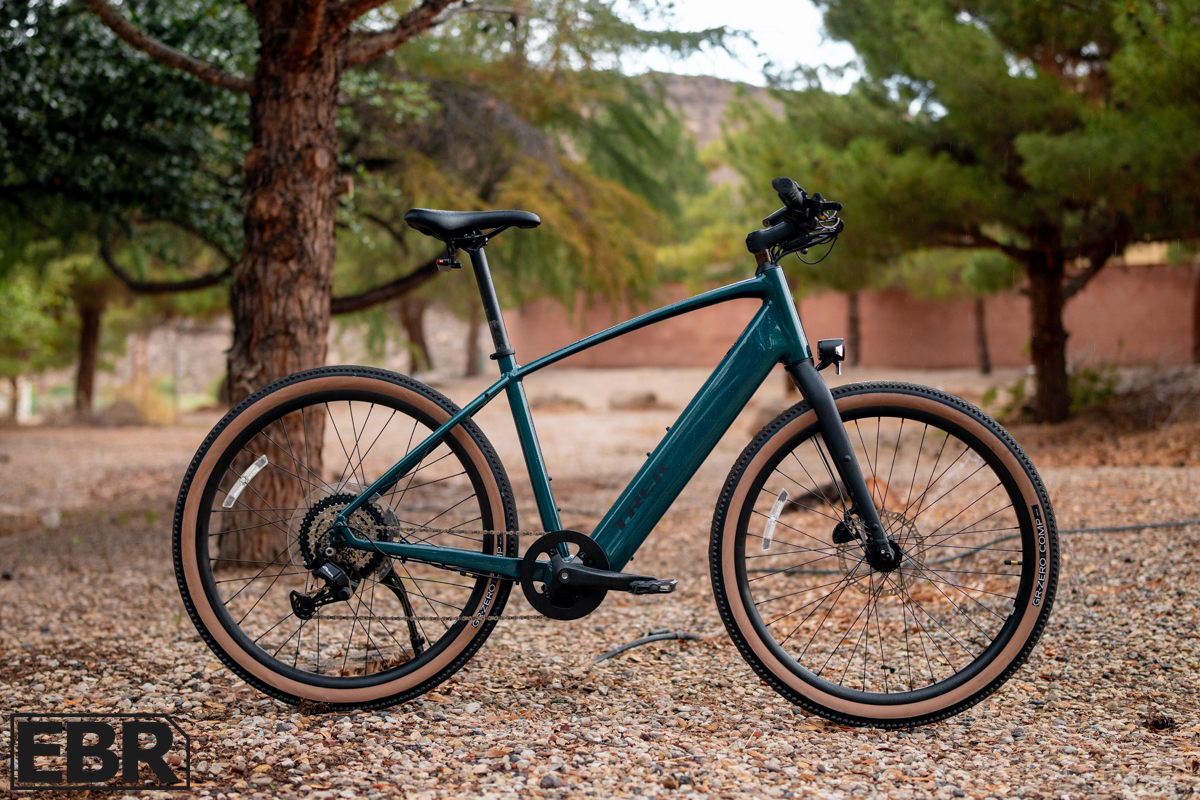
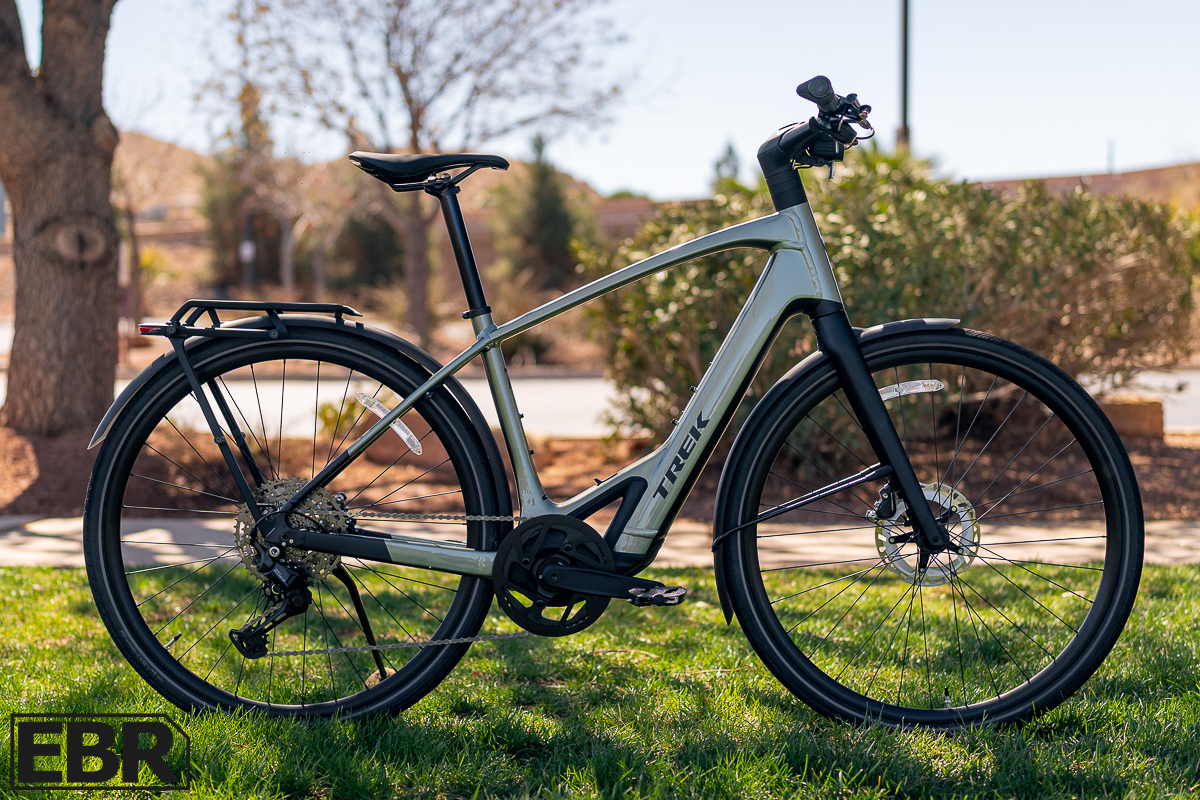
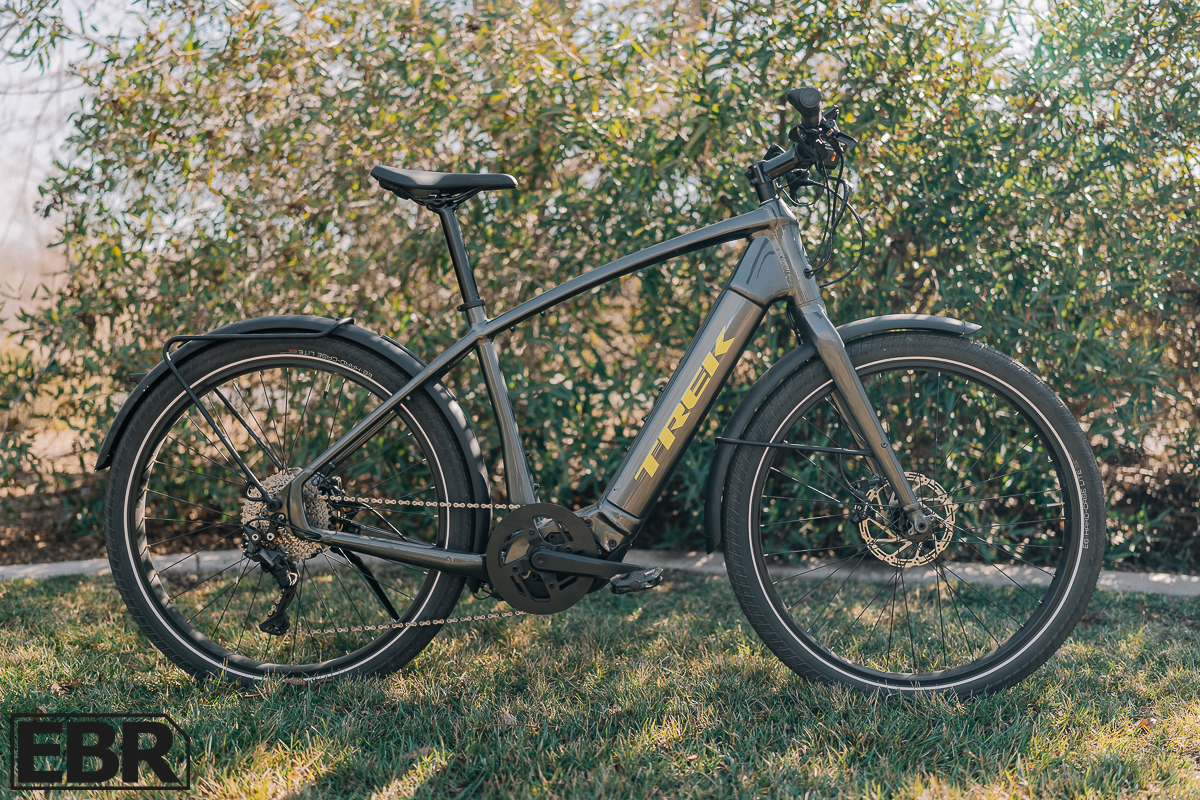
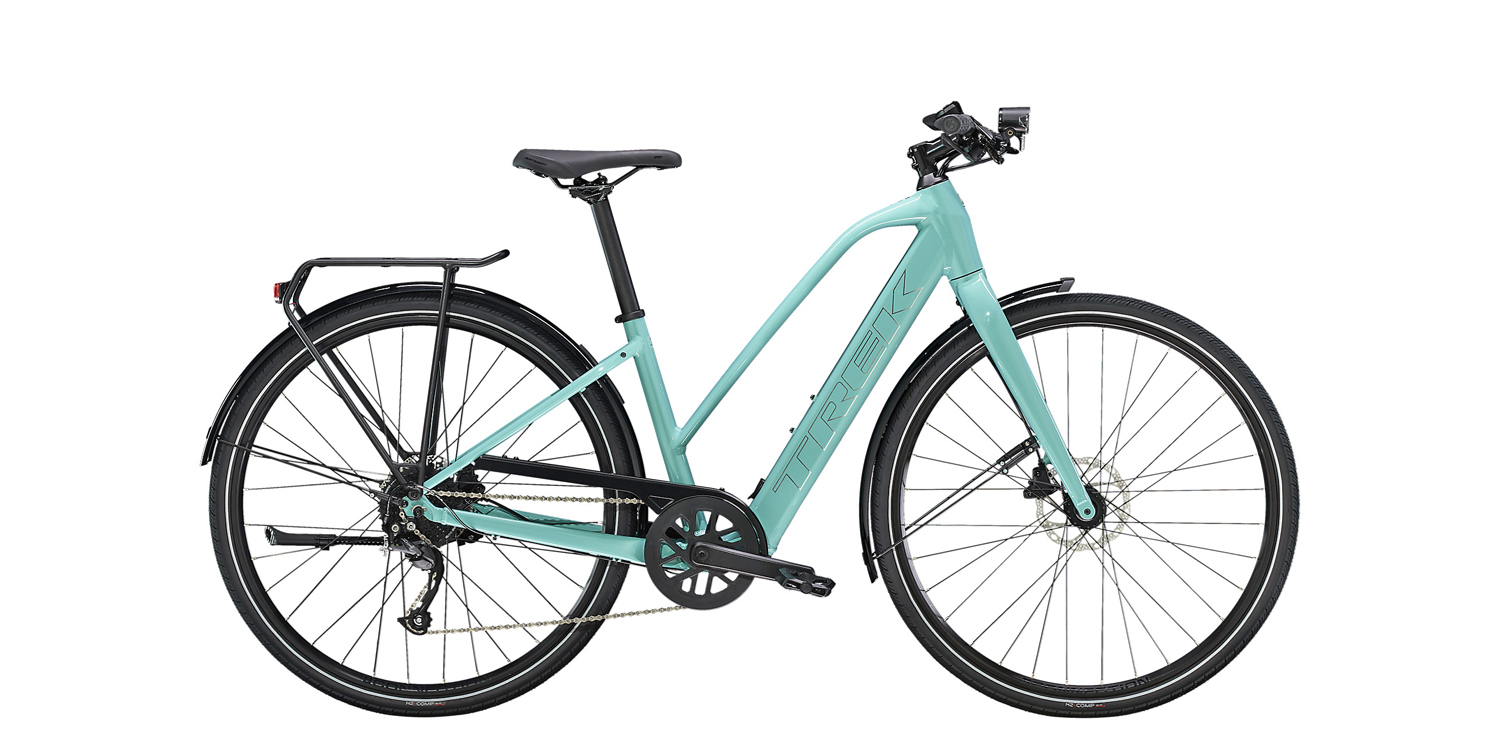
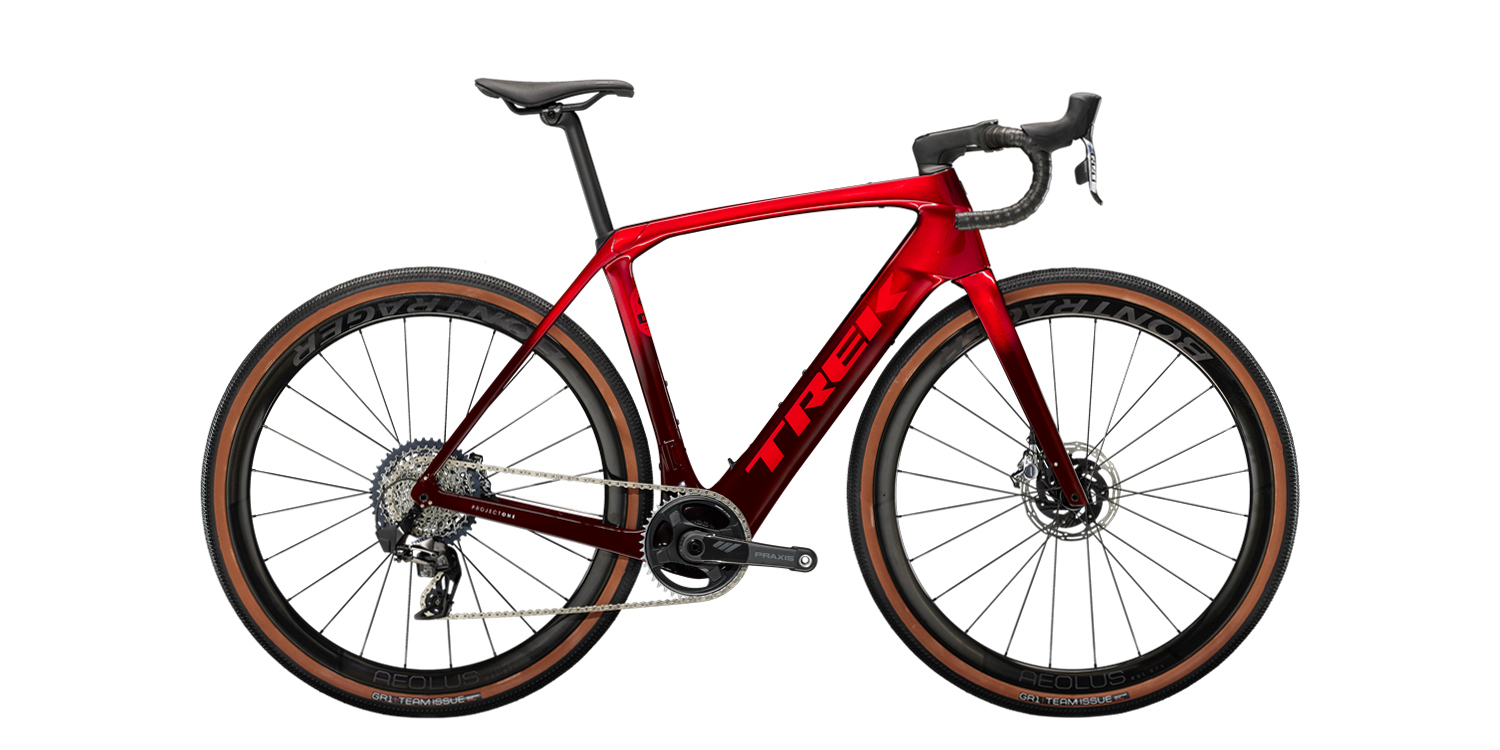
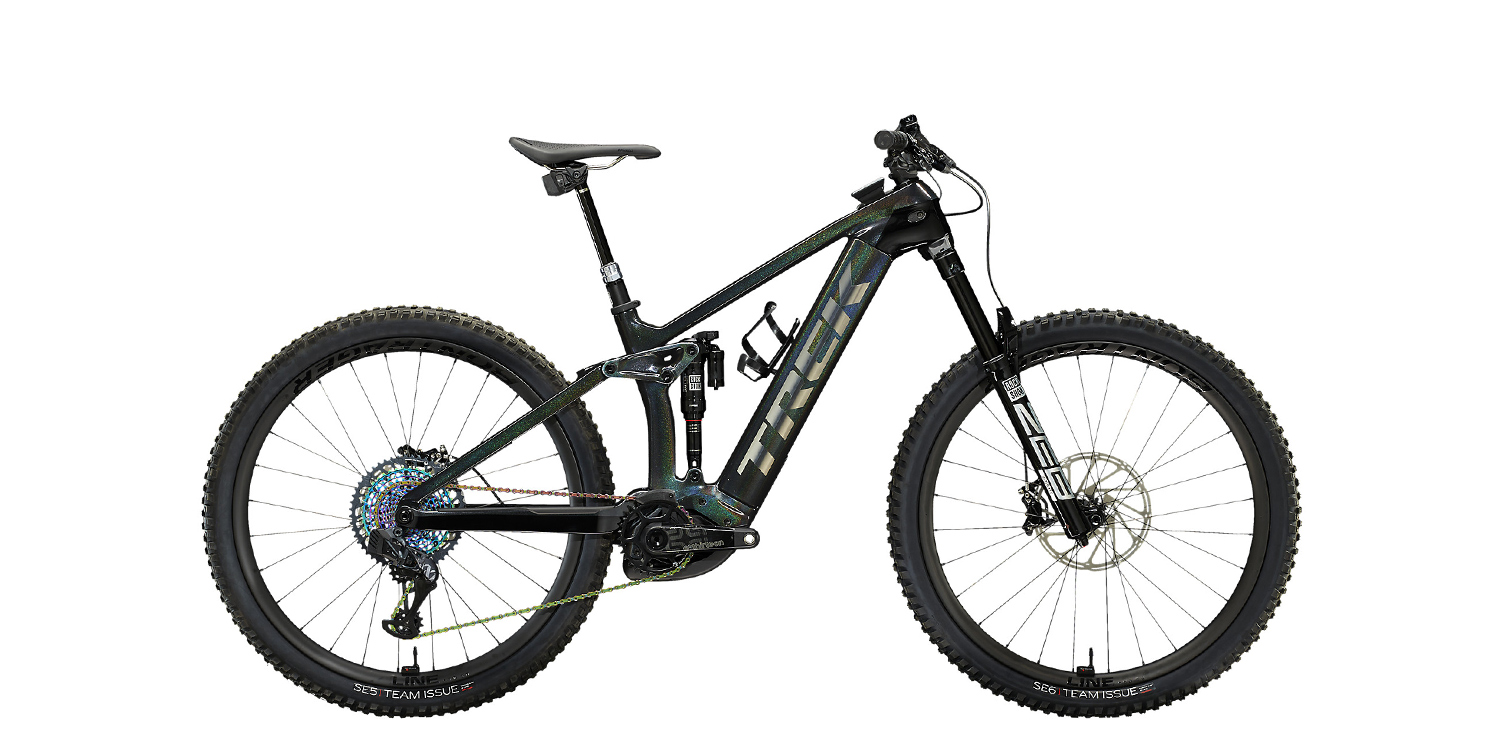
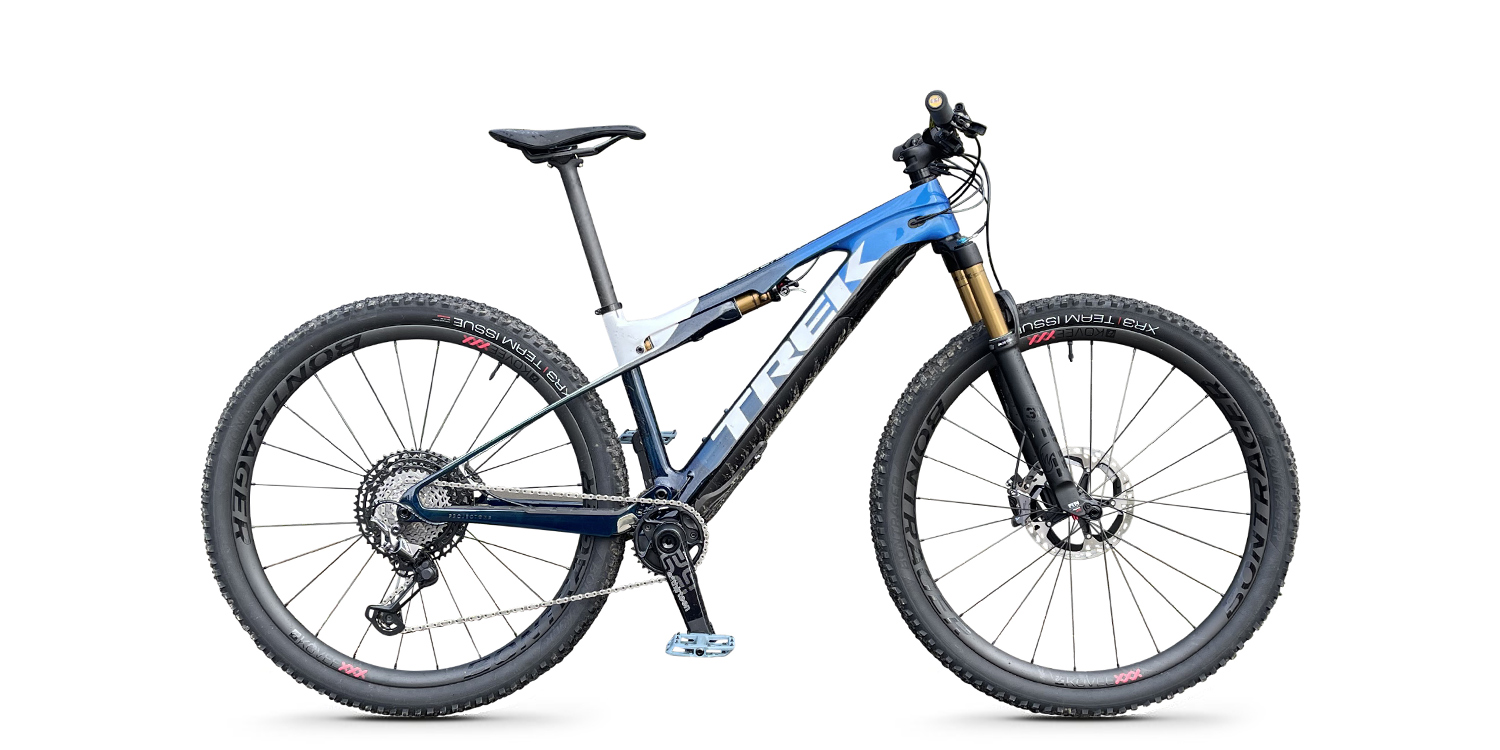
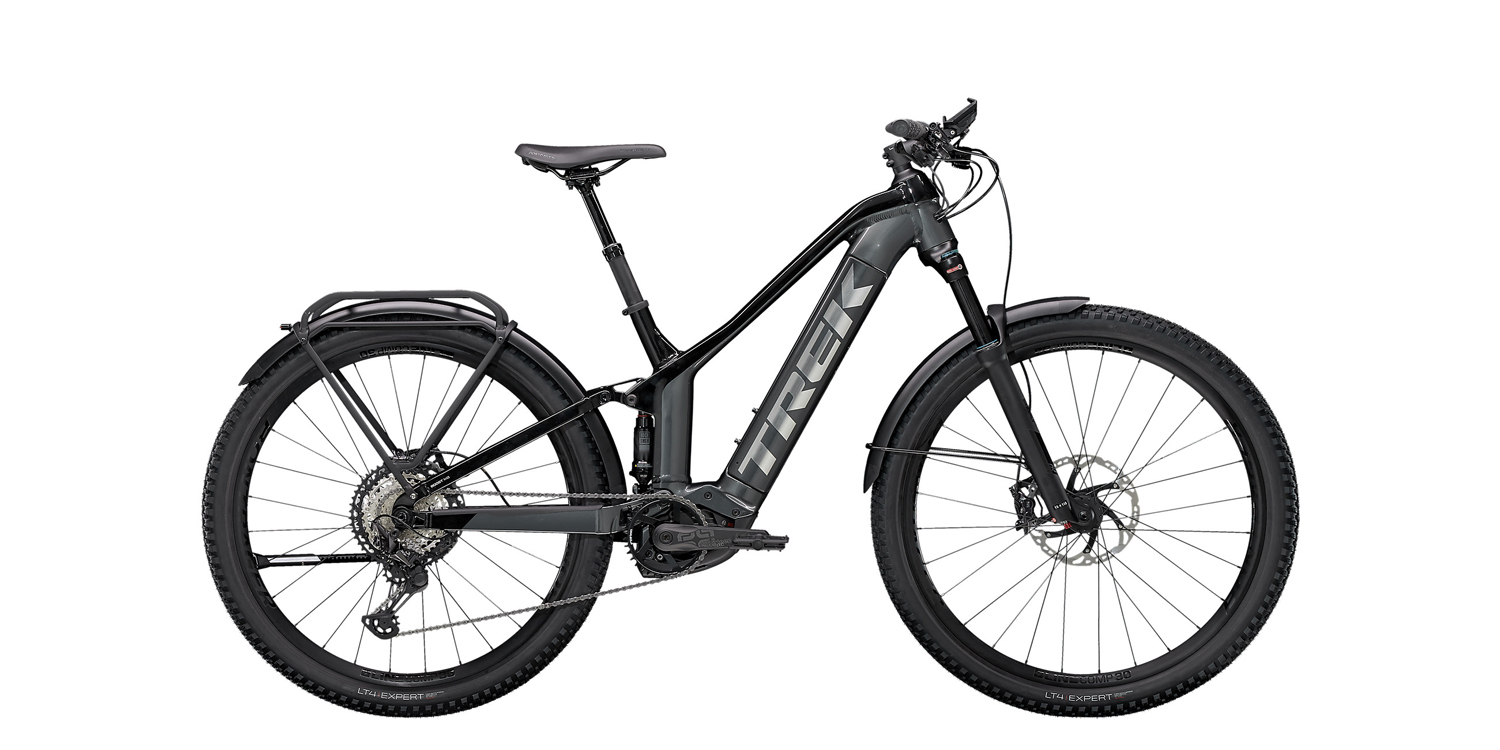
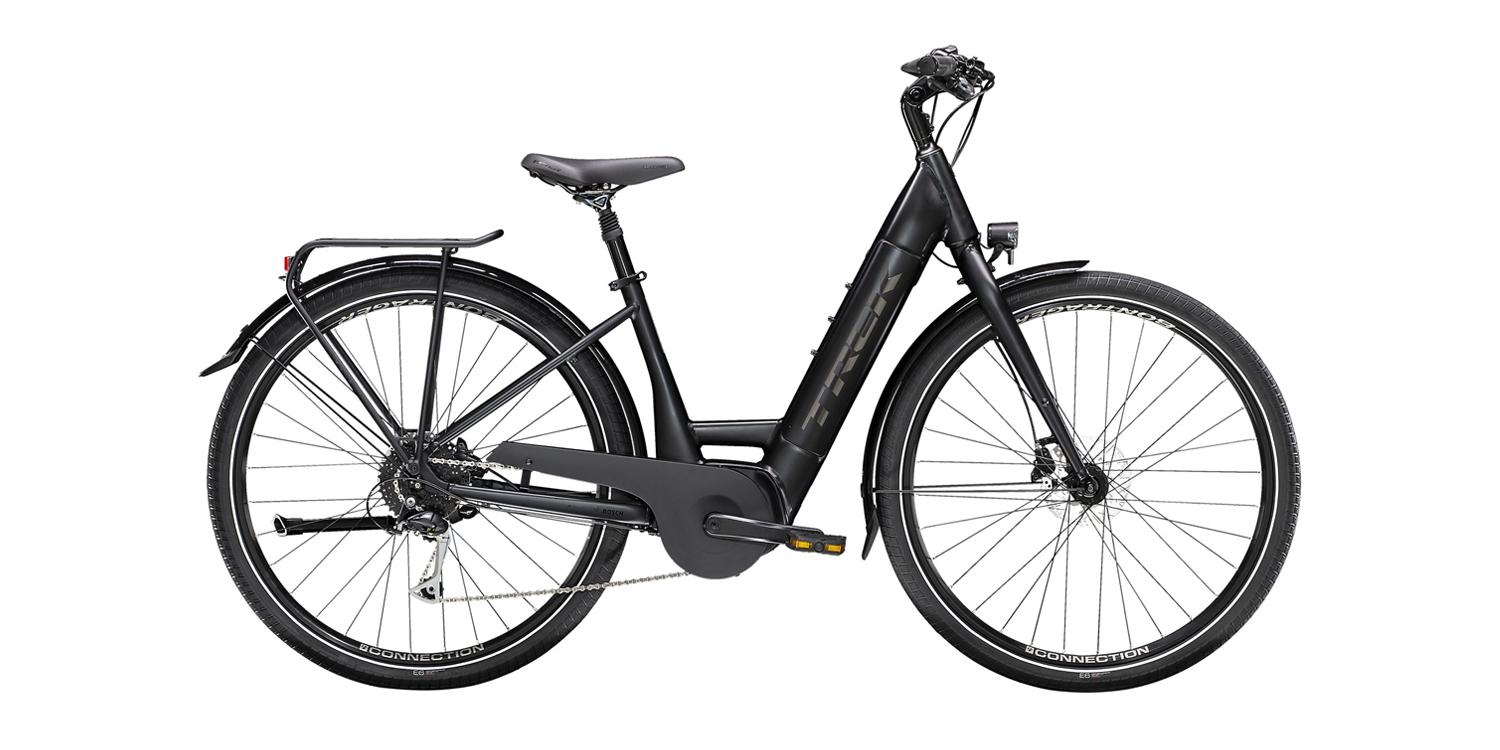
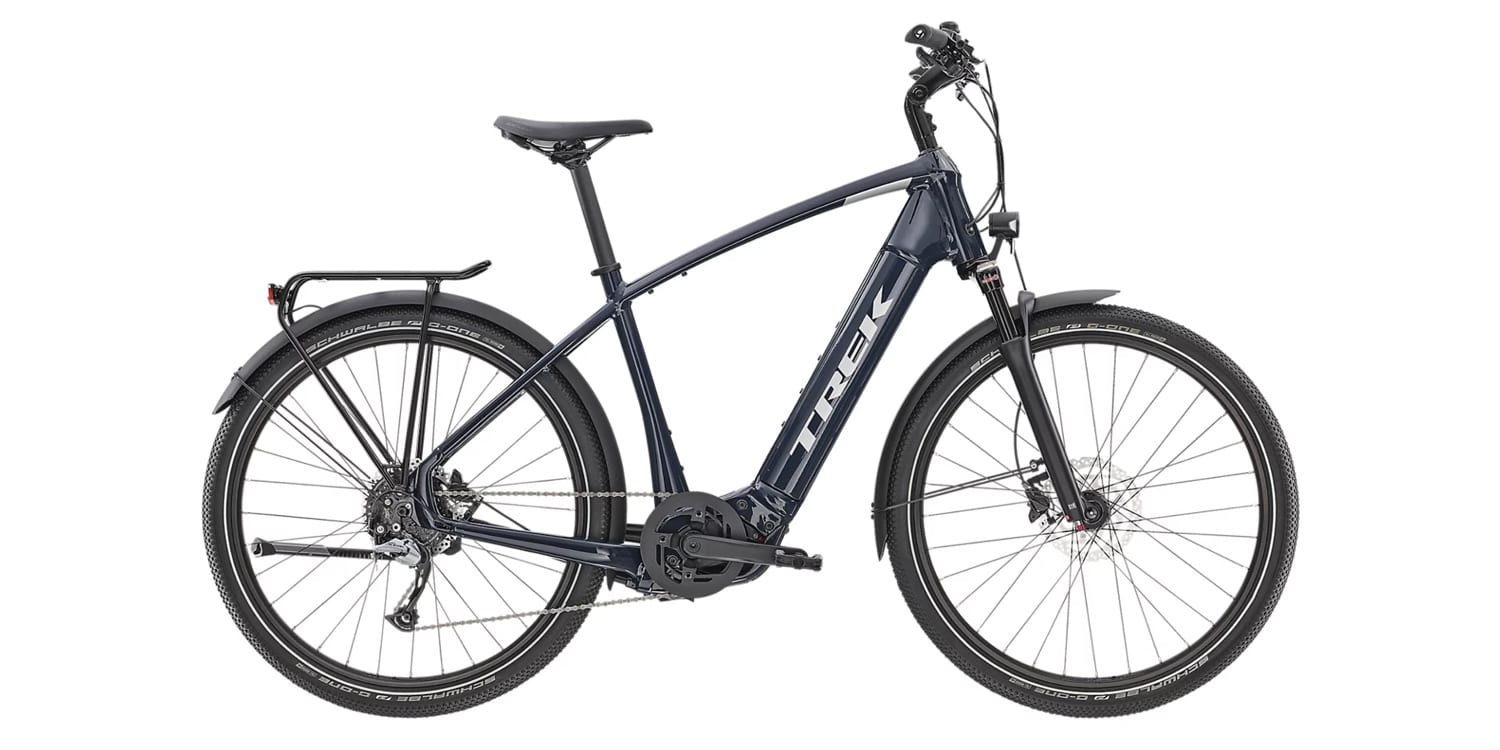
Reader Interactions